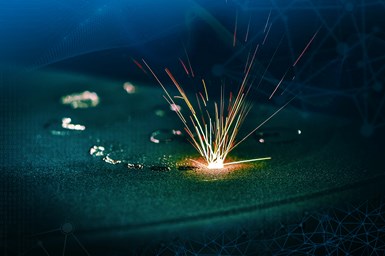Hexagon, Raytheon Simulation Tool to Improve 3D Printing Build Quality
Hexagon and Raytheon Technologies are combining technologies to create a simulation tool that will enable better evaluation and optimization of metal additive manufacturing processes.
Hexagon’s Manufacturing Intelligence division and Raytheon Technologies’ Pratt and Whitney business are combining technologies to create a new software that will predict defects before the expensive and time-consuming printing process begins.
The simulation tool will enable evaluation and optimization of metal additive manufacturing (AM) processes through the prediction of thermal history and defects at the laser path and powder layer scale. The analysis is designed to help designers and engineers evaluate the print outcome and test combinations of materials, geometries and print processes.
“We have partnered with Raytheon Technologies to deliver an intuitive and accessible tool that will help engineers quickly predict and mitigate risks,” says Jeff Robertson, Hexagon’s director of global business development. “The ability to evaluate full laser powder bed fusion (LPBF) parts on the meso-scale will reduce the effort to achieve part certification and thereby support industrialization of metal 3D printing.”
The software will be made available to a range of companies engaged in AM and will be complementary to Hexagon’s existing Simufact Additive tool. The similarity to the existing user interface will enable easy integration into existing manufacturing processes by users without the need for extensive training.
“By combining our additive manufacturing expertise with Hexagon’s, we are bringing a solution to market that helps manufacturers with all levels of experience make better products with greater efficiency,” says David Furrer, Pratt & Whitney senior fellow for materials and processes.
- Read about Hexagon’s collaboration for 3D printed plastic components.
- Read about Hexagon’s collaborative solution to integrate shopfloor data with data intelligence to orchestrate consistent quality from concept to part.
Related Content
-
Robot Vs. Gantry for Large-Format Additive Manufacturing (Includes Video)
Additive Engineering Solutions, specialist at 3D printing very large parts and tools on gantry machines, now also uses a robot for large-format AM. Here is how the robot compares.
-
Semiconductors, Tungsten, AM Affordability and More from Formnext 2024: AM Radio #56
The trade show included increased applications for the semiconductor market, machine launches and technology advances aimed at cost cutting, plenty of LFAM and more. Listen to our conversation on Formnext 2024.
-
7 Things We Saw at Formnext 2024 — Video Playlist
There were countless processes, applications and announcements at Formnext 2024. Here are seven standouts Peter Zelinski and Stephanie Hendrixson caught on film.












